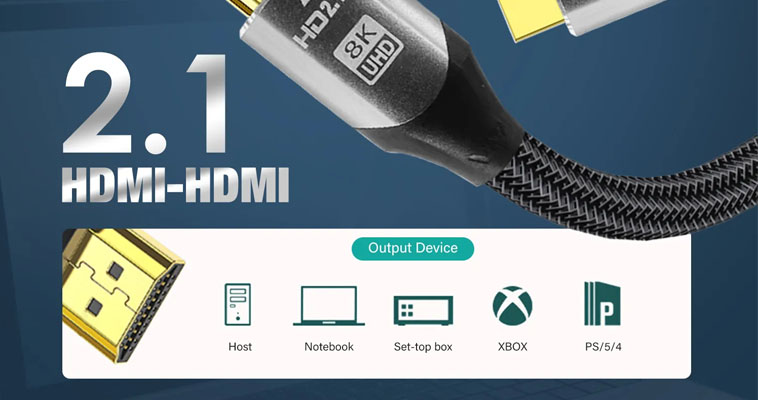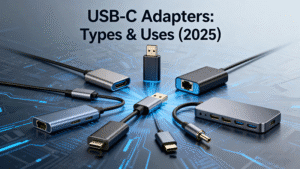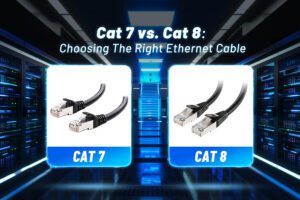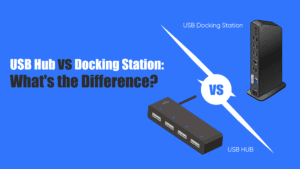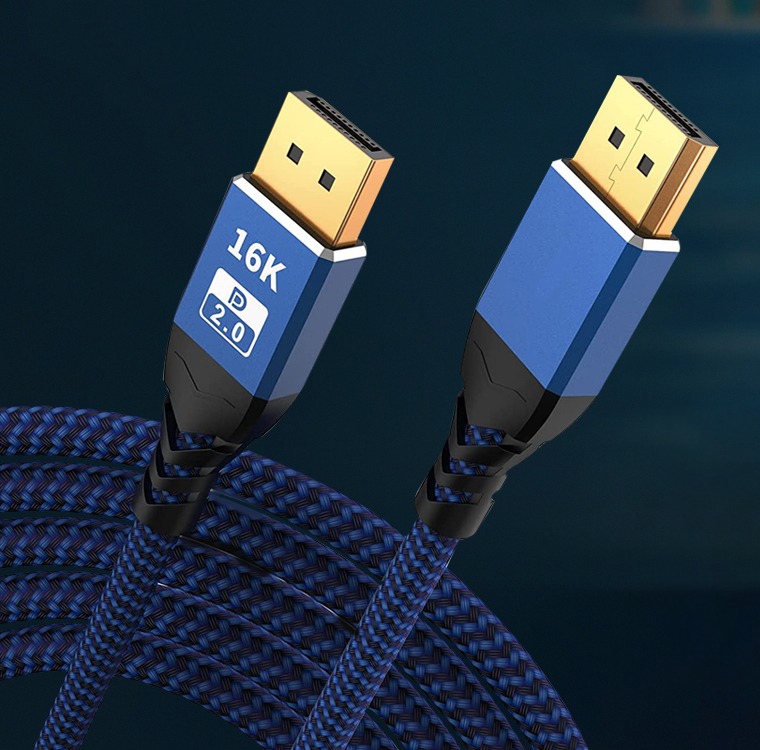As technology continues to advance, display resolutions have evolved from 1080p to 4K and now to 8K. With these stunning visual upgrades, selecting the right high-speed HDMI cables is critical to ensuring optimal performance for your 4K and 8K displays. While many people often overlook the role of cables, high-quality HDMI cables are key to delivering the best possible picture and sound quality. In this article, we’ll discuss why choosing the right high-speed HDMI cable is essential for achieving the full potential of 4K and 8K displays.
What Are High-Speed HDMI Cables?
HDMI (High-Definition Multimedia Interface) is the standard for transmitting video and audio signals between devices. As 4K and 8K display technology became more common, HDMI standards also underwent significant upgrades. The newer HDMI 2.0 and HDMI 2.1 versions support higher resolutions, faster refresh rates, and increased color depths, which require high-speed HDMI cables to ensure seamless signal transmission.
High-speed HDMI cables support 4K (3840×2160) and 8K (7680×4320) resolution video signals. These cables typically handle much higher data transfer rates, often up to 48Gbps, ensuring that your display works smoothly without signal degradation, flickering, or lag.
The Impact of High-Speed HDMI Cables on 4K Displays
When it comes to 4K displays, using the right HDMI cable is crucial to maintaining optimal image quality. 4K video signals require significantly more bandwidth than 1080p signals. Without the right cable, you could experience issues like frame drops, color distortion, or even no signal at all.
High-speed HDMI cables (often labeled as “High-Speed HDMI Cable”) support at least 18Gbps of data transfer rate, making them ideal for 4K content at 60Hz or higher refresh rates. When playing HDR (High Dynamic Range) content, only high-speed HDMI cables can deliver the rich detail and vibrant colors that 4K displays are capable of showing.
The Importance of High-Speed HDMI Cables for 8K Displays
8K displays are the next frontier in home entertainment, offering four times the resolution of 4K. To achieve such high resolutions, you need a cable that can handle the enormous data bandwidth required for smooth transmission. This is where HDMI 2.1 cables come in, supporting up to 48Gbps data transfer rate—an essential requirement for 8K video.
For 8K displays, you need a cable that supports high resolution, 120Hz refresh rates, and deeper color depths. High-speed HDMI cables ensure smooth, lifelike performance, with no lag or artifacts, even in fast-moving scenes or high-quality gaming content.
Why Choosing the Right HDMI Cable Matters
- Stable Signal Transmission: Low-quality HDMI cables may suffer from signal degradation, especially when transmitting high-definition video signals. This can lead to visual issues like screen flickering, poor resolution, or even a complete loss of signal. High-speed HDMI cables reduce interference and ensure a stable, high-quality signal.
- Full Compatibility: With the constant evolution of HDMI standards, especially with HDMI 2.0 and HDMI 2.1, choosing the right cable guarantees your 4K or 8K display is fully compatible with your device. Using an outdated or underpowered cable can restrict your system’s ability to deliver its best performance.
- Future-Proofing Your Setup: As 8K technology becomes more widespread, choosing an HDMI cable that supports 8K resolutions ensures your setup will be future-proof for years to come. You won’t need to replace your cables as newer, higher-resolution content becomes more common.
How to Choose the Right High-Speed HDMI Cable
When choosing the right HDMI cable for your 4K or 8K display, consider the following factors:
- HDMI Version Support: Make sure the cable is rated for HDMI 2.0 (for 4K) or HDMI 2.1 (for 8K) to ensure compatibility with your device.
- Bandwidth and Data Transfer Rate: For 4K, look for cables that support 18Gbps or higher. For 8K, select cables rated for 48Gbps to handle the higher bandwidth requirements.
- Cable Length: Longer HDMI cables are more prone to signal degradation. For extended distances, choose high-quality cables with boosters or optical HDMI.
- Certification: Check for “High Speed” or “Ultra High Speed” HDMI labels to ensure the cable meets industry standards for high-res video and audio.
Conclusion
High-speed HDMI cables are essential for optimal performance, whether you’re using a 4K or 8K display. They deliver stable, high-quality signal transmission, enabling your display to showcase crisp, vibrant visuals and flawless sound. Choosing the right cable can help you avoid common issues like image stuttering, color distortion, and signal loss.


